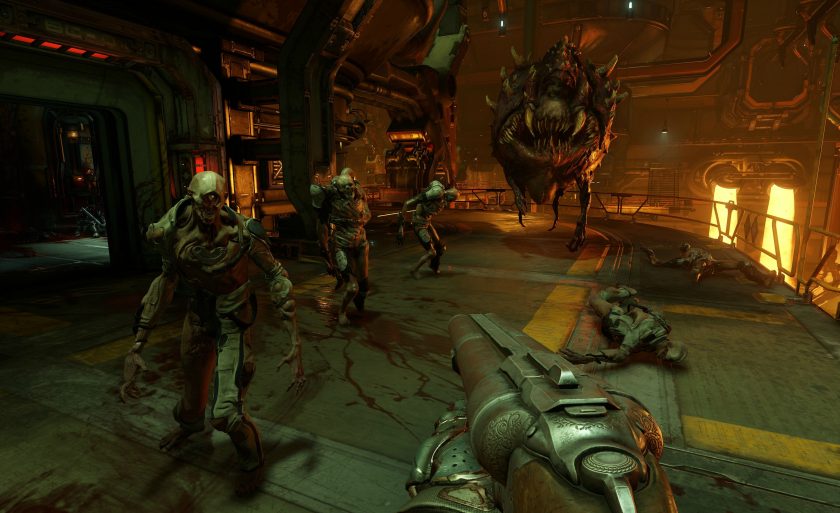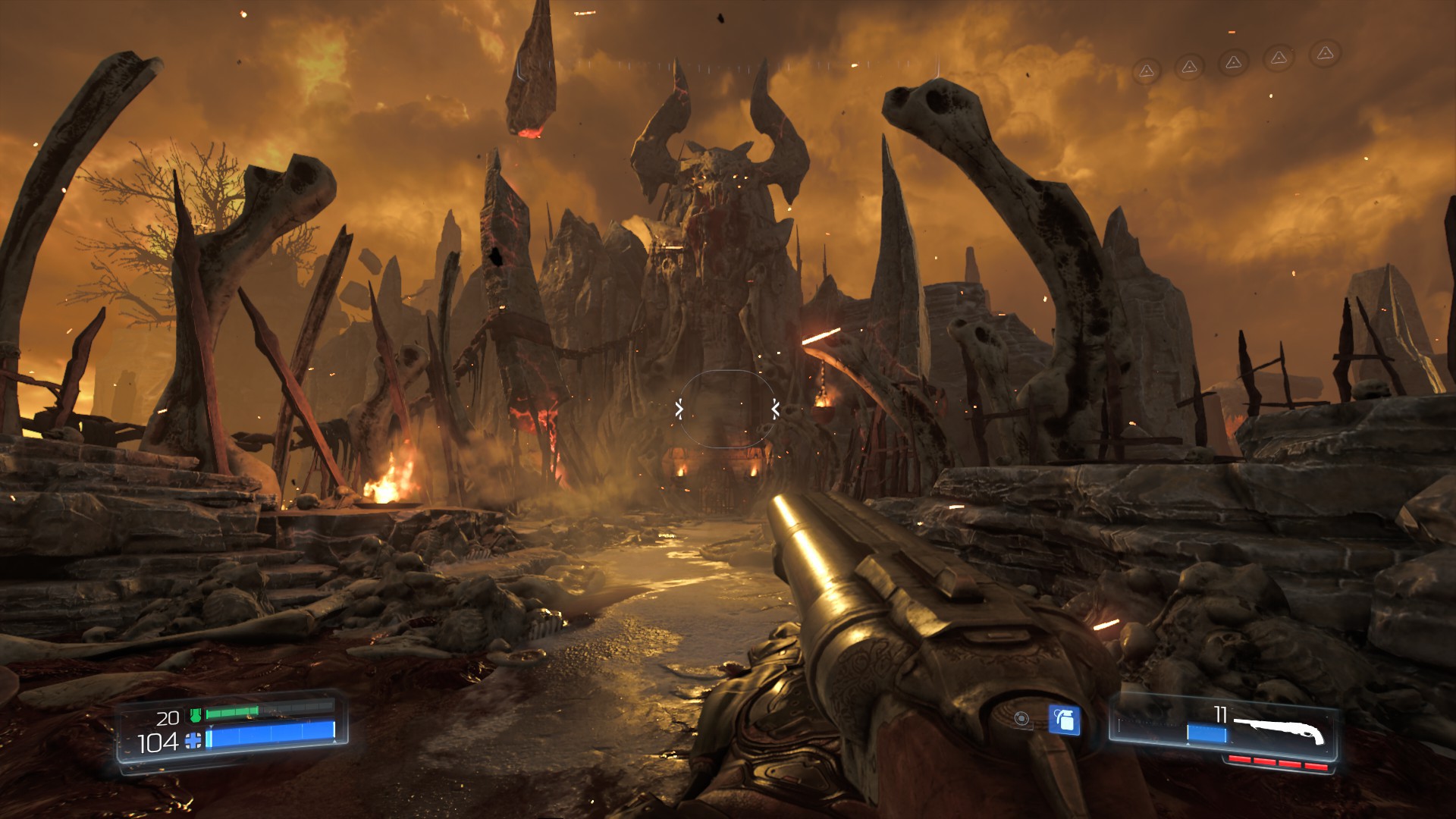Review: Doom
Written by Ben Vollmer
There’s something about the incredibly rampant pace of the Doom reboot that lights your hair on fire. It’s hard to say whether it’s the music, the brutal melee system that has you ripping the limbs off of hellish foes, or the speed in which all of it takes place. From the moment you step into Doom’s Hell to the moment you conquer it, there’s not a single chance to catch your breath.
Pacing is something that so many modern games struggle with. For the last decade or so, there has been a public outcry for longer playtime and more expansive worlds. As those worlds expanded and average playtime got longer, it became apparent that the time and space that filled our desires was largely empty. Doom kicks that attitude in the face and delivers one of leanest campaigns in years. Every minute of it’s dozen or so hours is stuffed to the brim with new enemies, weapons and upgrades. Any minutes of downtime are few and far between, but Doom uses them expertly, giving the player a handful of secret areas to explore and items to discover.
So what is it, exactly, that makes the game tick? The combat is immensely satisfying, for one. Every kill results in a delightful explosion of blood and guts, whether it be at the hands of the “Doom Slayer’s” fists or his vast array of weaponry. The melee combat is nice and smooth, giving players the green light (or more accurately, an orange glow) to smash their foes to smithereens. Not only does this form of combat save you some ammo, it regularly produces the health that so quickly depletes itself otherwise. Our protagonist is powerful, but the enemies are many and frequently much, much larger.

The weapons might just be the most fascinating part of the game. There are a dozen or so, all in all, but it seems like a far greater number while playing. Not only do they all feel extremely diverse, but they each come with two separate mod trees that spin a weapon into an entirely different form than it used to be. For instance, you receive a chain gun about midway through the game. After upgrading it with an additional mod, you can lay the gun out in turret form and have the chain gun shoot from two rapid-firing spouts. It lays even the toughest of foes to rest in a matter of seconds.
Not only are the weapons diverse in usage, they also have their own gorgeous aesthetics. Even the most basic shotguns, both of which you get in the early portions of the game, have wildly different designs. One feels powerful and rustic, while the other is faster and more modernized. The only gun that feels uninspired is the ammo-less pistol, which you’re given right off the bat. Not only is it decidedly weak, it doesn’t do anything overtly fun or different.
The game’s narrative is all over the place, as it can range anywhere from mindlessly stodgy to hilariously campy. It mostly leans on the latter, which is enough to drive the narrative home late. Fortunately, the game’s lack of attention to its narrative allows it to jump from action set to action set at an absurd speed. Most of the story and lore bits aren’t mandatory and can be found in the way not-so-hidden collectables. The voice acting is fun, especially the demonic pitch with everything is delivered. It all fits so expertly into the hellish environment that there’s no reason to question the hows or the whys, you just move forward.

Doom isn’t jaw-droppingly gorgeous, but it’s art style paints a perfectly red, infernal atmosphere. The real beauty is in the enemy design, where you’ll see anything from monkey-style “Fire Imps” to the horrific looking Mancubus, which sports a single eye and a circular, mushy shell. Enemies that look more imposing generally are more imposing, so the game does a nice job of having enemies live up to the hype. Every enemy presents its own special challenge and tends to be weak to certain weapons, so the visual cues involved are just as important to your success as they are to grabbing your attention.
Perhaps most importantly, Doom’s simplistic level design – usually just a handful of platforms, portals and underpasses – is a thing of beauty. Enemy placement feels perfect, and it takes an incredible amount of movement just to keep yourself alive. The various platforms you can jump to provide small moments of leverage against your foes, but it’s in those short lapses of time that you find success. Portals allow you to transport from one side of a level to another, and even though the levels tend to be awfully small, it gives you a brief moment of respite as your enemies turn their heads. Every level has a distinct feel to it, with some prioritizing freedom of movement over more constricting, circular levels. As the game goes on, you’re able to rely less and less upon cover in favor of controlled, fluid movement. It’s a perfect way to scale the difficulty while also making the “Doomslayer” feel more powerful.
In many ways, Doom has revitalized the first-person shooter campaign. It doesn’t do anything incredibly innovative, but it nails the core tenants of the genre: fantastic, fast-paced combat, great sound design, over-the-top violence and a campy narrative. It’s hard to find too many faults with the campaign, especially in the second half when you have all weapons and tools at your disposable. Doom sends you to Hell, and makes you never want to leave.
Score: 9.0
